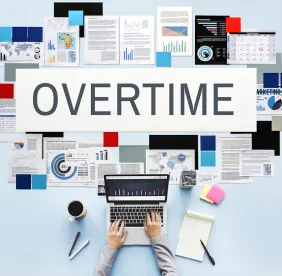On August 30, 2023, the U.S. Department of Labor (“DOL”) released its proposed new rule on the “white collar” overtime exemptions. The new rule, which would be codified in a revised 29 C.F.R. Part 541, will be published shortly as a Notice of Proposed Rulemaking in the Federal Register, at which time a public comment period will open.
The source of the DOL’s authority to engage in rulemaking with respect to the “white collar” exemptions—i.e., those that relate to executive, administrative, learned and creative professional, outside sales, and computer employees—arises from Section 13(a)(1) of the Fair Labor Standards Act, which authorizes the Secretary of Labor to “define[] and delimit[] from time to time by regulations” the definitions of what it means to be employed “in a bona fide executive, administrative, or professional capacity.” (It is open to debate whether the entirety of the Part 541 regulations—including the right to set the minimum salary for exemption—is consistent with, or in excess of, this Congressionally-delegated authority.)
We’ve been expecting a revised overtime rule since President Biden took office. In the fall of 2021, the DOL targeted April 2022 for issuance of a proposed new rule. While the agency appeared focused on raising the minimum salary for exemption, some were hoping for a broader revision of Part 541, including more clarity and examples in certain of the duties tests for exemption. For better or worse, the changes in the proposed rule are limited to the former. So, here’s what we see in terms of material rule changes:
- The minimum salary for exemption as executive, administrative, or professional (“EAP”) employee increases from $684 ($35,568 annualized) to $1,059 per week ($55,068 annualized) as of the effective date of the new rule.
- Three years after the effective date of the new rule, and every three years thereafter, the minimum salary for exemption as an EAP employee will increase to an amount not less than the 35th percentile of weekly earnings of full-time nonhourly workers in the lowest-wage Census Region (the “standard salary level”).
- There are no other changes to the current salary minimum provisions (in 29 C.F.R. § 541.600), including to the exceptions for teachers, academic administrative employees, lawyers, and physicians, or to the alternative method of paying computer employees on a minimum hourly basis.
- The minimum total annual compensation level for exemption as a “highly compensated employee”—e., one who customarily and regularly performs any one or more of the exempt duties or responsibilities of an EAP employee—increases from $107,432 to $143,988, with triennial increases such that the amount reflects the annualized earnings amount of the 85th percentile of full-time nonhourly workers nationally.
- Not fewer than 150 days before each triennial update of the minimum salary and compensation levels described above, the DOL will publish a notice in the Federal Register stating the updated amounts, each tied to data published by the Bureau of Labor Statistics.
Once the proposed rule is published in the Federal Register, a 60-day public comment period will open. At some point after that period closes, the DOL will issue a final rule with an effective date, which likely will not be until sometime in 2024. If the rule is finalized as proposed, it will have no impact for employers in certain states. In New York, for example, the minimum salary for exemption as an executive or administrative employee in New York City, Long Island, and Westchester County is currently $1,125 per week ($58,500 annualized). In California, exempt employees must earn no less than two times the State’s minimum wage for full-time work—currently, $64,480 annualized—to meet the state’s EAP employee exemption test. In many states, however, the proposed new rule (if finalized) will require employers to choose between implementing a 55% increase for many exempt employees or reclassifying them as overtime-eligible, tracking their hours, and paying them a premium for weekly hours worked over 40.
We expect fairly immediate legal challenges to the proposed rule when it’s published in the Federal Register. Back in 2016, when the Obama DOL issued a final rule raising the minimum weekly salary for exemption from $455 to $913, a consortium of states attorneys general challenged the rule in court, arguing (among other things) that the new rule increased the minimum salary threshold to such an extent that it was no longer a plausible proxy for the job duties of an EAP employee and therefore exceed the DOL’s statutory authority to “define and delimit” what it means to be an EAP employee. A federal district court in Texas agreed, holding “it is clear Congress defined the EAP exemption with regard to duties” and the DOL “does not have the authority to use a salary-level test that will effectively eliminate the duties test” by excluding many employees who perform exempt duties. The court enjoined the rule on a nationwide basis. We’ll see what level of traction a similar challenge will have here.




 />i
/>i
